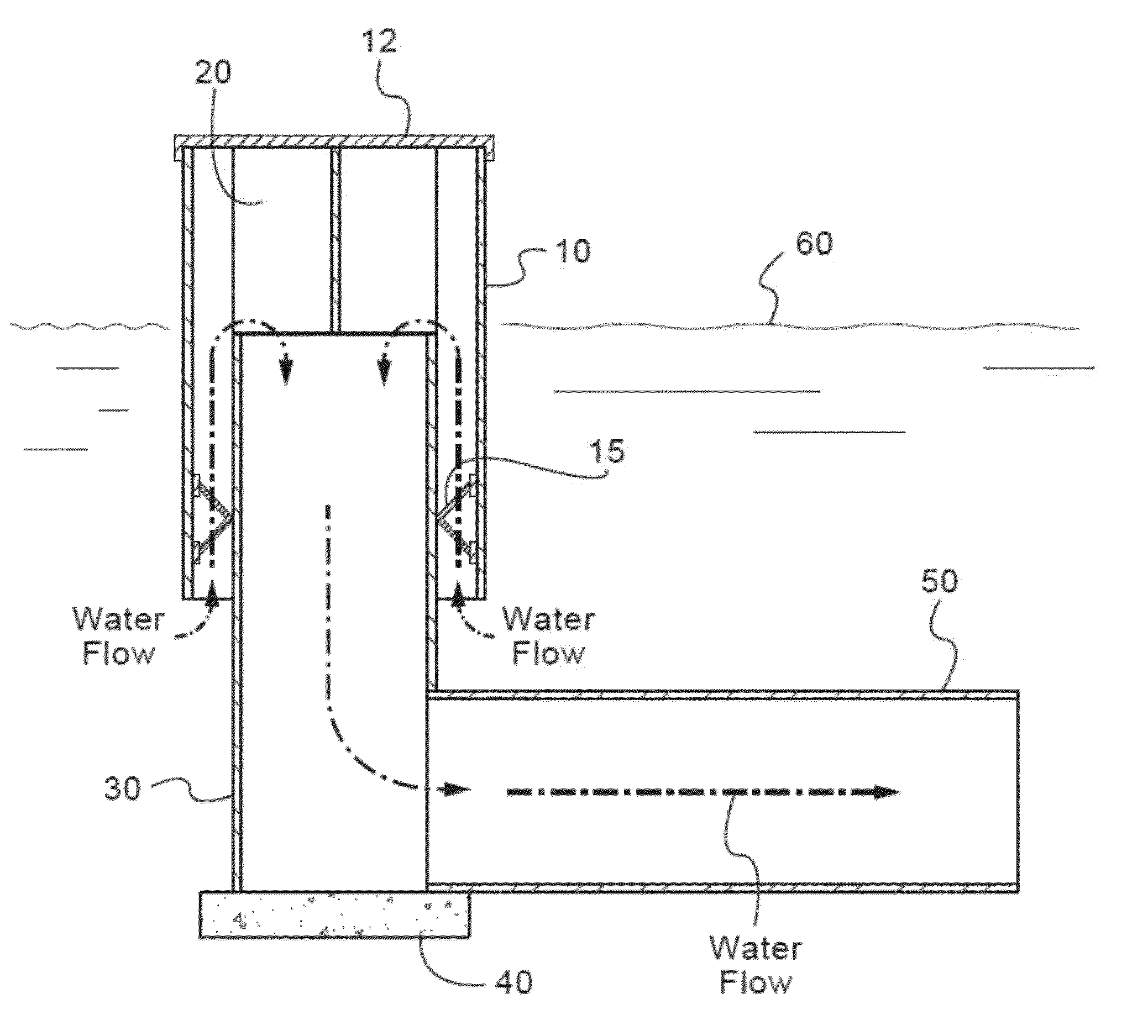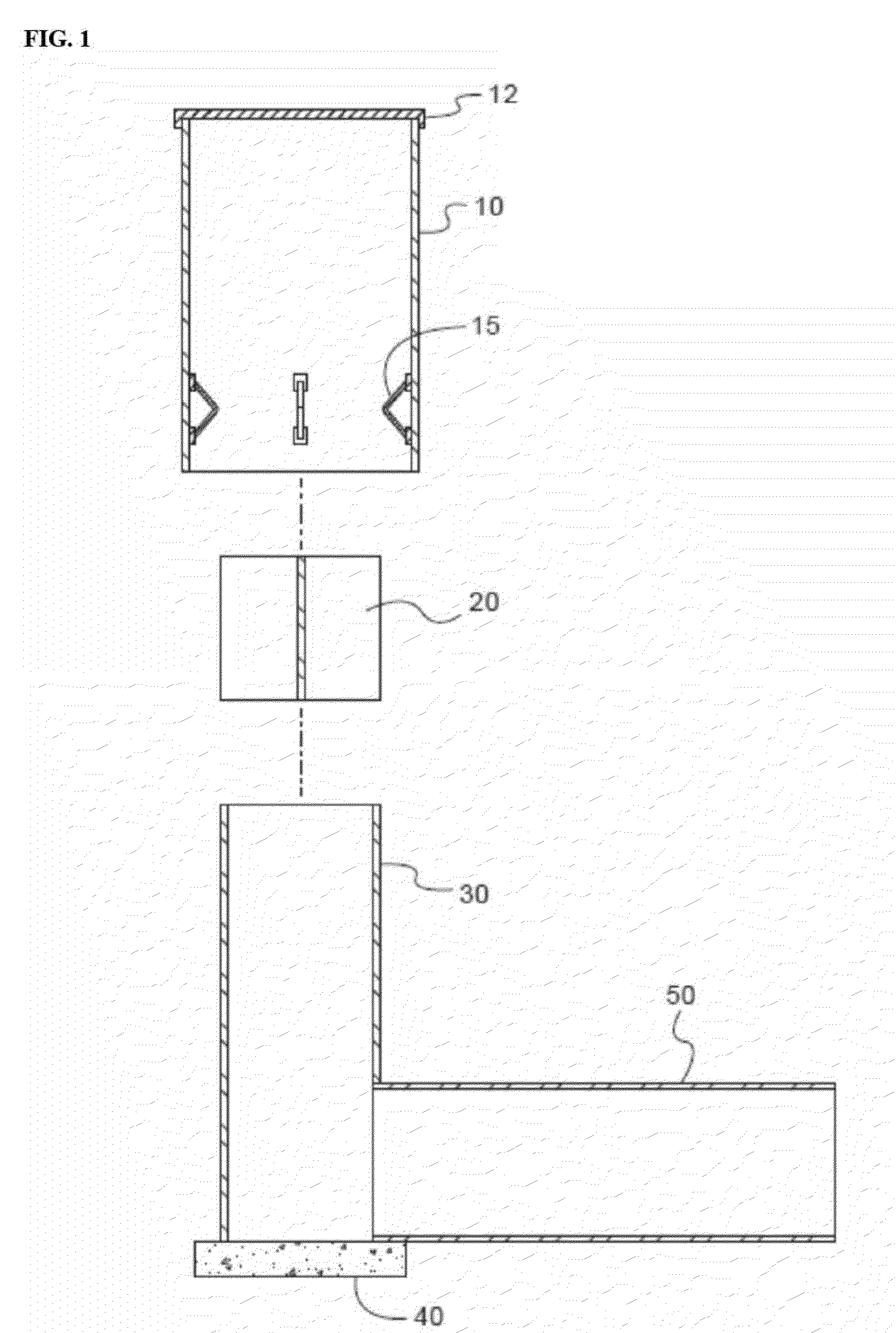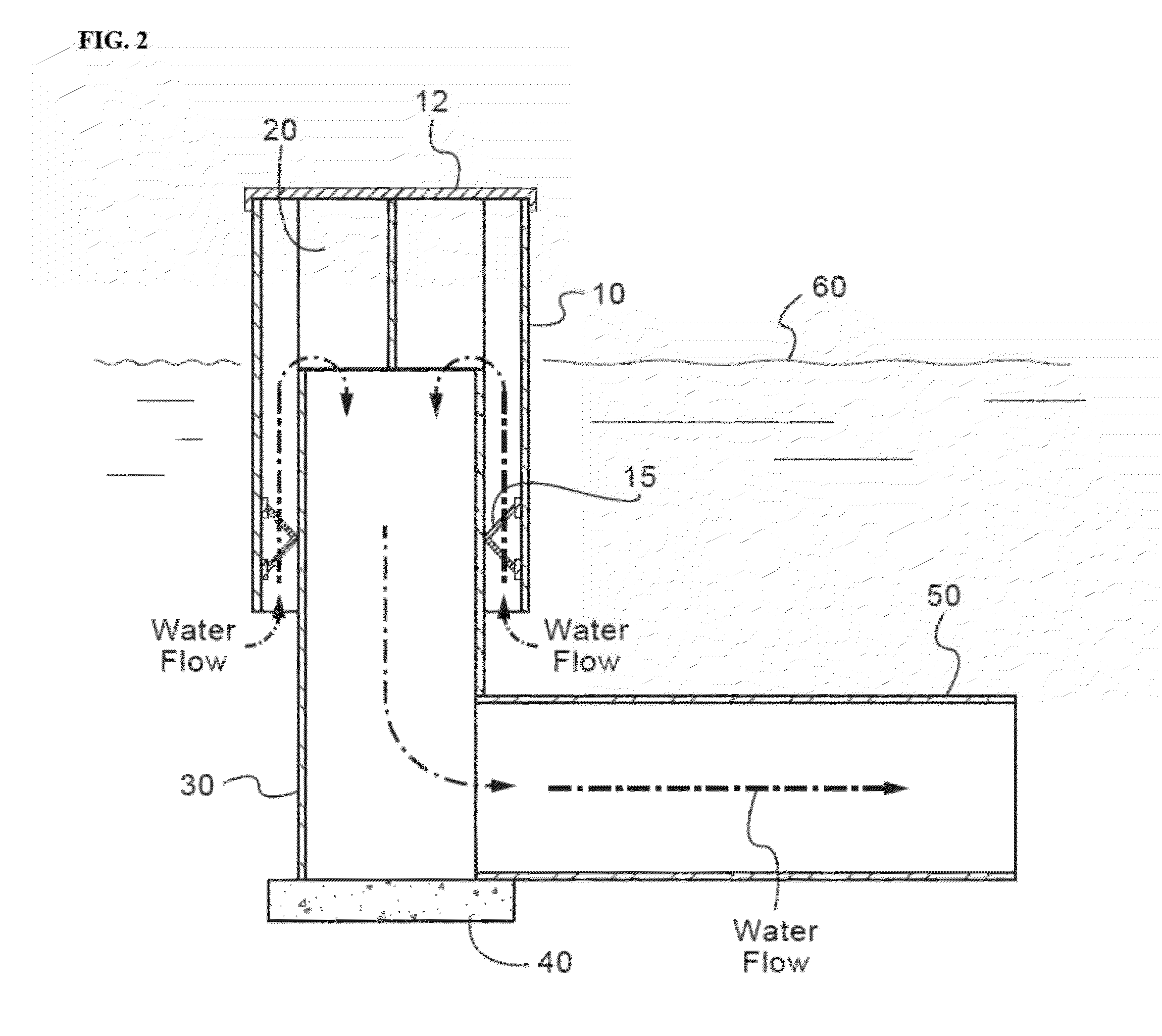Pond water diversion apparatus for flood control and prevention of castor infestation
a technology of castor infestation and water diversion apparatus, which is applied in the field of water management, can solve the problems of preventing land managers from appropriately controlling the depth of ponds, affecting the effect of water diversion apparatus, and limiting plant growth
- Summary
- Abstract
- Description
- Claims
- Application Information
AI Technical Summary
Benefits of technology
Problems solved by technology
Method used
Image
Examples
example 1
General Experimental Observations Upon Installing an Experimental Water Diverter Apparatus According to the Disclosure
[0113]A water diverter apparatus has been installed in ponds in Mississippi to experimentally test the effect on debris buildup and beaver attraction. The installed water diverter apparatus was as depicted in FIGS. 1-9.
[0114]The water diverter apparatus was installed in ponds that had severe beaver infestation that resulted in constant clogging of the existing water control apparatus via the beavers building dams and clogging the riser.
[0115]The experimental water diverter apparatus was installed on existing riser assemblies and subsequently monitored.
[0116]The water diverter apparatus led to continual water flow into the riser that was not impeded by debris buildup and was not clogged by beaver dams.
[0117]The inventor observed that beavers were not attracted to the water level management apparatus with the water diverter installed, as there was no surface water curr...
example 2
Specific Experimental Observations Upon Installing an Experimental Water Diverter Apparatus According to the Disclosure
[0119]A water diverter apparatus as depicted in FIGS. 1-9 was installed in Carroll County, Mississippi to experimentally test the effect on debris buildup and beaver attraction.
[0120]The landowner had a preexisting metal drop inlet (riser) type water control structure in a pond to provide water level maintenance. However, the metal drop inlet riser was continually clogged by beavers building damns upon the top of the riser, which prevented water from flowing into the riser.
[0121]Consequently, the water from the pond was frequently forced through the emergency spillway existing on the pond, which in turn led to severe erosion and loss of pond water. Furthermore, the beavers were damaging the riser and the structure had to be replaced.
[0122]Upon installation of an experimental water diverter apparatus as taught herein, the beavers stopped building dams near the riser....
example 3
Specific Experimental Observations Upon Installing an Experimental Water Diverter Apparatus According to the Disclosure
[0124]A water diverter apparatus as depicted in FIGS. 1-9 was installed in Carroll County, Mississippi to experimentally test the effect on debris buildup and beaver attraction.
[0125]The landowner had a preexisting metal drop inlet (riser) type water control structure in a lake to provide water level maintenance. However, the metal drop inlet riser was continually clogged by beavers lodging sticks, logs, and debris in the water discharge riser.
[0126]Upon installation of an experimental water diverter apparatus as taught herein, the beavers stopped clogging the riser.
[0127]The experimental water diverter apparatus has now been present at the landowner's property and is still providing effective beaver control, as the beavers are not clogging the riser with debris. Thus, the water diverter apparatus as taught herein is effective in lakes, at preventing beavers from cl...
PUM
 Login to View More
Login to View More Abstract
Description
Claims
Application Information
 Login to View More
Login to View More - R&D
- Intellectual Property
- Life Sciences
- Materials
- Tech Scout
- Unparalleled Data Quality
- Higher Quality Content
- 60% Fewer Hallucinations
Browse by: Latest US Patents, China's latest patents, Technical Efficacy Thesaurus, Application Domain, Technology Topic, Popular Technical Reports.
© 2025 PatSnap. All rights reserved.Legal|Privacy policy|Modern Slavery Act Transparency Statement|Sitemap|About US| Contact US: help@patsnap.com



